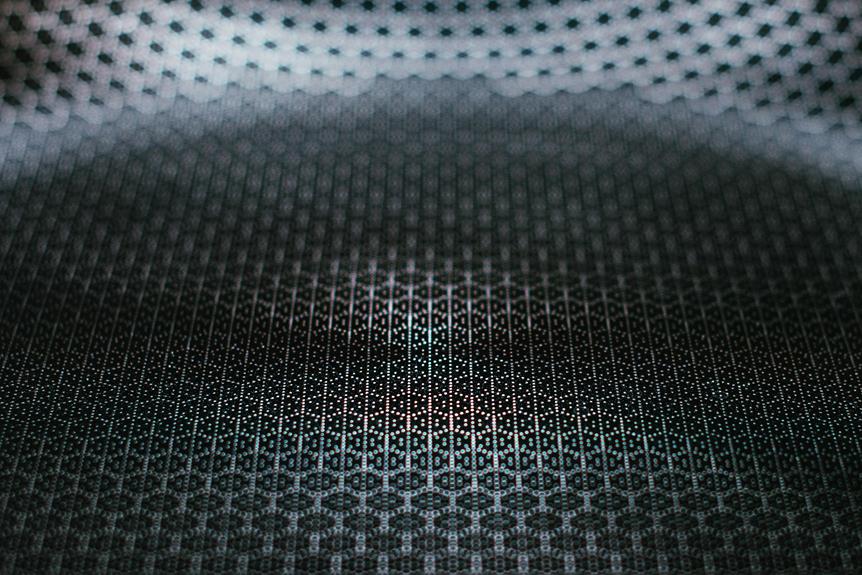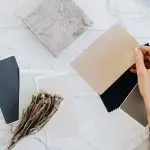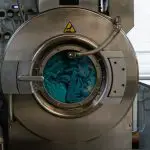Wondering if iron glue is the ultimate adhesive for fabric? You might be surprised to learn that iron glue, also known as fabric glue, has its own set of unique benefits and drawbacks when it comes to bonding fabric.
In this guide, we'll dive into the ins and outs of iron glue and explore whether it's the best choice for your fabric projects. We'll weigh the pros and cons, compare it to other popular adhesives, and provide tips for getting the most out of your iron glue.
By the end, you'll have a solid understanding of whether iron glue is the right adhesive for your fabric needs.
Key Takeaways
- Iron glue, also known as fabric or fusible adhesive, creates a strong bond on fabrics, ensuring durability and longevity.
- Iron glue offers excellent heat resistance, making it suitable for fabrics exposed to high temperatures.
- Applying iron glue is easy and convenient, saving time and effort when working with different types of fabrics.
- However, iron glue may not effectively adhere to delicate fabrics or those sensitive to high heat, and it lacks flexibility once set, resulting in a stiff feel for fabrics that require movement.
Understanding Iron Glue for Fabric
If you're looking for a strong and versatile adhesive for fabric, iron glue offers a reliable solution. Iron glue, also known as fabric or fusible adhesive, is a popular choice for bonding fabric because of its ease of use and durability.
When it comes to iron glue application, it's essential to follow the manufacturer's instructions carefully. Typically, you'll place the adhesive between the fabric layers and apply heat with an iron to activate the bonding process.
Fabric bonding techniques using iron glue vary depending on the type of fabric and the project at hand. For lightweight fabrics such as cotton or polyester, a low to medium heat setting on the iron is usually sufficient. However, for heavier fabrics like denim or canvas, a higher heat setting may be necessary to ensure a strong bond.
It's important to test a small area of the fabric first to determine the appropriate heat level and duration for bonding. Additionally, using a pressing cloth can help protect delicate fabrics from direct heat exposure while still allowing the adhesive to activate effectively.
Understanding the proper iron glue application and fabric bonding techniques is crucial for achieving professional-looking results in your sewing and crafting projects.
Pros of Using Iron Glue
When it comes to using iron glue for fabric, you'll find that it creates a strong bond on fabrics, making it a reliable choice for your projects. Plus, it's easy to apply, saving you time and effort when working with different types of fabrics.
These are just a few of the advantages you can expect when using iron glue as your adhesive for fabric.
Strong Bond on Fabrics
You can achieve a strong bond on fabrics using iron glue, providing a durable and long-lasting hold for your projects.
Iron glue is designed to create a powerful bonding durability that can withstand the rigors of everyday use. This means that your fabric projects will maintain their integrity over time, without the need for frequent repairs.
Additionally, iron glue offers excellent heat resistance, ensuring that the bond remains strong even in high-temperature environments. This is particularly beneficial for fabrics that may be exposed to heat or sunlight, as the adhesive won't weaken or degrade under these conditions.
With iron glue, you can trust that your fabric creations will remain securely bonded, allowing you to enjoy their durability and longevity.
Easy to Apply
Achieving a strong bond on fabrics with iron glue isn't only durable and long-lasting but also easy to apply, making it a convenient choice for your projects.
When it comes to application techniques, iron glue offers simplicity. Just apply the glue to the fabric, press the pieces together, and then use an iron to activate the adhesive.
The heat settings are crucial for a successful application. Ensure that your iron is set to the appropriate temperature for the type of fabric you're working with. Once the iron is heated to the correct setting, use it to press the fabric for the recommended amount of time.
This straightforward process makes iron glue a hassle-free option for bonding fabrics.
Cons of Using Iron Glue
Considering the potential for heat damage and limited flexibility, using iron glue may not be the ideal choice for all fabric adhesion needs. One of the primary cons of using iron glue is the limitations it presents in terms of the types of fabrics it can effectively adhere to. Iron glue may not work well with delicate fabrics or those that can't withstand the high heat required for application.
Additionally, the application techniques for iron glue can be more complex and time-consuming compared to other fabric adhesives. The process of using iron glue requires precision and caution to avoid damaging the fabric or creating a messy adhesive application.
Furthermore, the limited flexibility of iron glue once it sets can be a drawback, especially for fabrics that require some degree of movement and stretch. This lack of flexibility can result in a stiff or uncomfortable feel when the fabric is worn or used.
With these considerations in mind, it's important to weigh the potential drawbacks of using iron glue against the specific requirements of your fabric project before deciding on the most suitable adhesive.
Comparing Iron Glue to Other Adhesives
When comparing iron glue to other adhesives for fabric, assess the specific needs and properties of the materials being bonded. Different adhesives offer varying benefits, so it's essential to consider the following:
- Comparing adhesion strength: Some adhesives are better suited for heavy-duty fabrics or materials that require a strong bond, while others may be more suitable for lighter fabrics or temporary fixes.
- Long term durability: Consider the expected lifespan of the bonded materials. Some adhesives may degrade over time, while others are designed for long-lasting durability.
- Cost effectiveness: Evaluate the overall cost of the adhesive, including the amount needed for the project and any additional materials required for application.
- Environmental impact: Take into account the environmental considerations of each adhesive, such as toxicity, recyclability, and sustainability.
Each of these factors plays a crucial role in determining the most suitable adhesive for your fabric project. By carefully comparing adhesives based on these criteria, you can make an informed decision that aligns with your specific needs and priorities.
Best Practices for Applying Iron Glue
When applying iron glue to fabric, it's important to consider the iron temperature and duration, fabric compatibility and testing, and preparing fabric surfaces.
Iron glue works best when the temperature is suitable for the fabric and the application duration is adequate.
It's also crucial to test the glue on a small, inconspicuous area of the fabric before applying it to the entire surface.
Iron Temperature and Duration
To apply iron glue to fabric effectively, you should set the iron temperature to the recommended level and maintain the application for the specified duration. When working with iron glue, it's crucial to get the temperature and duration just right. Here are some best practices for applying iron glue:
- Set the iron temperature according to the instructions provided by the glue manufacturer.
- Ensure that the iron isn't too hot, as excessive heat can damage the fabric or the glue's bonding capability.
- Apply consistent pressure and movement with the iron during the specified bonding duration.
- Check the fabric and adhesive periodically during the application to ensure the desired bonding is achieved without overheating.
Following these best practices will help you achieve strong and durable bonds when using iron glue on fabric.
Fabric Compatibility and Testing
To ensure proper bonding with iron glue, it's important to consider the compatibility of the fabric and conduct thorough testing before application.
Different fabrics have varying levels of durability and react differently to adhesives. Before using iron glue, it's crucial to check the compatibility of the adhesive with the specific fabric you intend to bond.
Conducting a simple compatibility test on a small, inconspicuous area of the fabric can help determine if the adhesive will work effectively without damaging the fabric.
It's also important to consider the fabric's durability and how it may withstand the heat and pressure of the iron during the bonding process.
Preparing Fabric Surfaces
First, thoroughly clean the fabric surfaces that will be bonded using a lint-free cloth and a mild detergent to remove any dirt, oil, or residue.
When preparing fabric surfaces for iron glue application, follow these best practices:
- Ensure the fabric is completely dry before applying the adhesive.
- Use a light sanding to roughen smooth or coated fabrics for improved bonding strength.
- Test a small, inconspicuous area first to ensure compatibility and adhesion.
- Apply the iron glue evenly and sparingly to avoid excessive seepage and mess.
Proper surface preparation is crucial for achieving optimal adhesion and bonding strength when using iron glue on fabric. By following these application techniques, you can ensure a successful and durable bond between fabric surfaces and iron glue.
Tips for Maximizing Iron Glue Bonding
When using iron glue to bond fabric, ensure that the fabric is clean and free of any dust or debris before applying the adhesive.
Maximizing bonding between the fabric and iron glue involves a few key tips. First, test the compatibility of the fabric and the adhesive on a small, inconspicuous area before applying it to the entire surface. This can help you ensure that the iron glue will effectively bond with the fabric without causing any damage.
Additionally, proper surface preparation is crucial for maximizing the bonding strength. Use a gentle fabric cleaner to remove any dirt, oil, or residue that could hinder the adhesive's effectiveness. Once the fabric is clean and dry, consider heat setting the adhesive according to the manufacturer's instructions. Heat setting can enhance the bonding process and ensure a durable and long-lasting hold.
Alternative Adhesive Options for Fabric
For exploring alternative adhesive options for fabric, consider the compatibility and bonding strength of various adhesives with different fabric types. When it comes to fabric adhesive options, it's essential to choose the right adhesive for the specific type of fabric and the intended use.
Here are some alternative adhesive options to consider:
- Fabric glue: This specialized adhesive is designed specifically for bonding fabric and offers a strong and flexible bond, making it ideal for various fabric projects.
- Fusible web: This adhesive comes in sheet or tape form and is activated by heat, allowing for easy bonding of fabrics without the need for sewing.
- Spray adhesive: This adhesive is suitable for larger fabric projects and provides a temporary or permanent bond, depending on the type of spray adhesive used.
- Double-sided fabric tape: This adhesive option is convenient for temporary fixes or for holding fabric in place before sewing, offering a quick and easy bonding solution.
Considering these fabric adhesive options and bonding techniques will help you choose the most suitable adhesive for your fabric projects, ensuring durable and reliable bonds.
Conclusion: Choosing the Right Adhesive
To choose the right adhesive for your fabric project, consider the specific fabric type and intended use when making your selection. Different fabrics require different adhesives and bonding techniques to ensure a strong and durable bond. When choosing adhesives for fabric, it's important to take into account factors such as washability, flexibility, and whether the fabric will be exposed to heat or moisture. Here's a helpful table to guide you in choosing the right adhesive for your fabric project:
| Fabric Type | Recommended Adhesive |
|---|---|
| Cotton | Fabric glue, fusible web |
| Denim | Fabric glue, iron-on patches |
| Silk | Fabric glue, fusible interfacing |
| Leather | Leather glue, contact cement |
| Synthetic | Super glue, hot glue |
Keep in mind that these are general recommendations and it's always best to test a small, inconspicuous area of your fabric before applying any adhesive. Also, consider the intended use of the fabric when making your selection. Whether you're hemming, patching, or embellishing, choosing the right adhesive is crucial for the success and longevity of your fabric project.
Frequently Asked Questions
Can Iron Glue Be Used on Delicate Fabrics Like Silk or Chiffon?
Yes, iron glue can be used on delicate fabrics like silk or chiffon. It provides strong fabric adhesion and durability. However, always test on a small, inconspicuous area first to ensure it won't damage the fabric.
Will Iron Glue Leave a Visible Residue or Mark on the Fabric After Application?
After applying iron glue, residue visibility and fabric damage depend on the application technique. Professional recommendations usually ensure minimal marks and damage. It's essential to follow these guidelines for best results.
Is Iron Glue Machine Washable and Can It Withstand High Heat Settings?
Yes, iron glue is machine washable and can withstand high heat settings. It's ideal for delicate fabrics, as it doesn't leave a visible residue. When using it, you can feel confident that your fabric will remain in great condition.
Are There Any Safety Concerns or Precautions to Consider When Using Iron Glue?
When using iron glue, it's crucial to consider safety precautions, like adequate ventilation and avoiding direct skin contact. Always test for potential allergies before application. Follow best practices for application techniques to ensure successful and safe results.
Can Iron Glue Be Used for Outdoor or Heavy-Duty Fabric Applications, Such as for Outdoor Furniture or Camping Gear?
For outdoor applications and heavy-duty fabrics, iron glue is a strong choice. It provides durability and weather resistance, but for delicate fabrics like silk and chiffon, consider alternative options to ensure compatibility and longevity.
- Max Mara and the Cotton Gabardine Trench: A Timeless Investment - June 24, 2025
- A Review of the Theory Gabardine Trench Coat for Modern Minimalists - June 24, 2025
- Fear of God’s Modern Interpretation of the Wool Gabardine Overcoat - June 24, 2025







